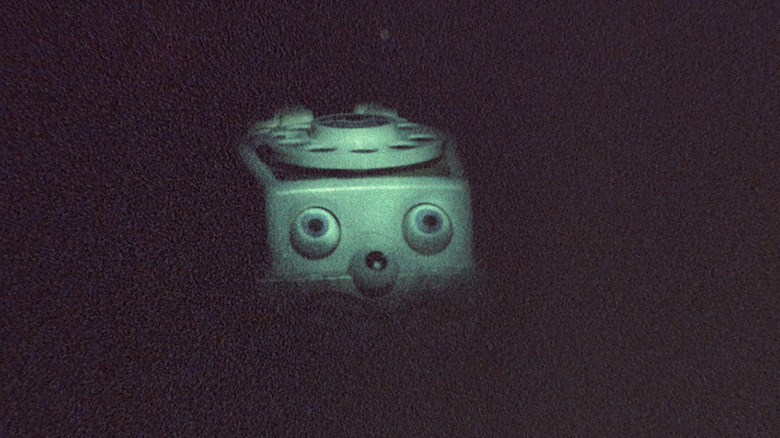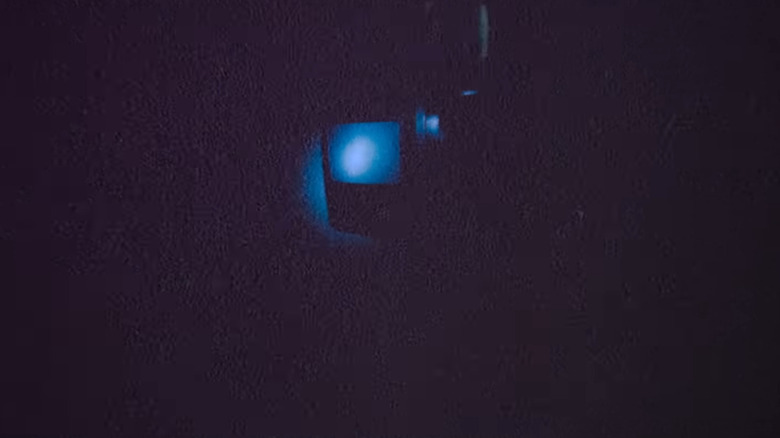The Skinamarink Team Came Up With A Clever Way Of Shooting Scenes In Pitch Black
One of the greatest things about horror, as a genre, is its ability to sneak up on you, especially in the independent market, where films don't have the resources that major studios have to make sure you know about their upcoming slate. You can buy awareness, but as is the case with films like "Terrifier 2," sometimes word of mouth from the festival circuit can give your movie a boost money can't buy. Next month will see the limited release of "The Outwaters," which has been described as the closest you'll come to feeling the sensation of death. But at this moment, the indie horror darling turned viral sensation (for better or worse) that has been capturing folks' attention is "Skinamarink."
Everything I've seen about the lo-fi sensory nightmare from director Kyle Edward Ball has chilled me to the bone. Ball has made a name for himself for his work on YouTube, where he would take people's nightmares and recreate them as best he can. They're short, simple, and incredibly unnerving. Each new video showed an evolution of his talents, and it was only a matter of time until he did something more with the concept. All signs point to "Skinamarink" being the terrifying culmination of this project.
Rather than following a traditional narrative, "Skinamarink" follows two children alone in a house who discover that their father has gone missing and that all of the doors and windows have mysteriously disappeared. If any of Ball's experimental videos are an indicator of what to expect, this could be the closest you'll come to revisiting the hazy nightmares of your childhood. With only a $15,000 budget to bring this film to life, Ball had to get creative when it came to lighting its darkest scenes.
Bring in the sun gun
One aspect, among many, that makes "Skinamarink" feel so unique is how it's shot. Traditional framing is abandoned for characters that exist beyond the center of the frame. On top of that, you also have some sequences that are simulated to take place while enshrouded in complete darkness. That would prove to be a challenging task for any filmmaker, let alone one with limited resources, but during an interview with Inverse, Ball talked about a tool that gave him the light source he needed.
"Obviously, we couldn't shoot 100% pitch black unless we used infrared, so we developed this technique of putting a sun gun on top of the camera, putting a blue filter over it, and grading with it," Ball said. Sun gun light kits replicate the shine of natural sunlight, which can be used to differentiate colors on cars in an indoor setting. Sometimes you have to work with what you have, and this seems like the perfect way to set a mood while making sure folks have a glimpse into the belly of the beast.
As terrifying as it would be to encase the audience in complete darkness, this is a clever way to give some semblance of visibility in the film's most intense sequences. The blue filter allows for a splash of color that brings a dreamlike aura to the waking nightmare unfolding in front of your eyes, whereas infrared would likely shatter the illusion of experiencing the dark from a frightened child's perspective.
"Skinamarink" is now playing in limited release.

